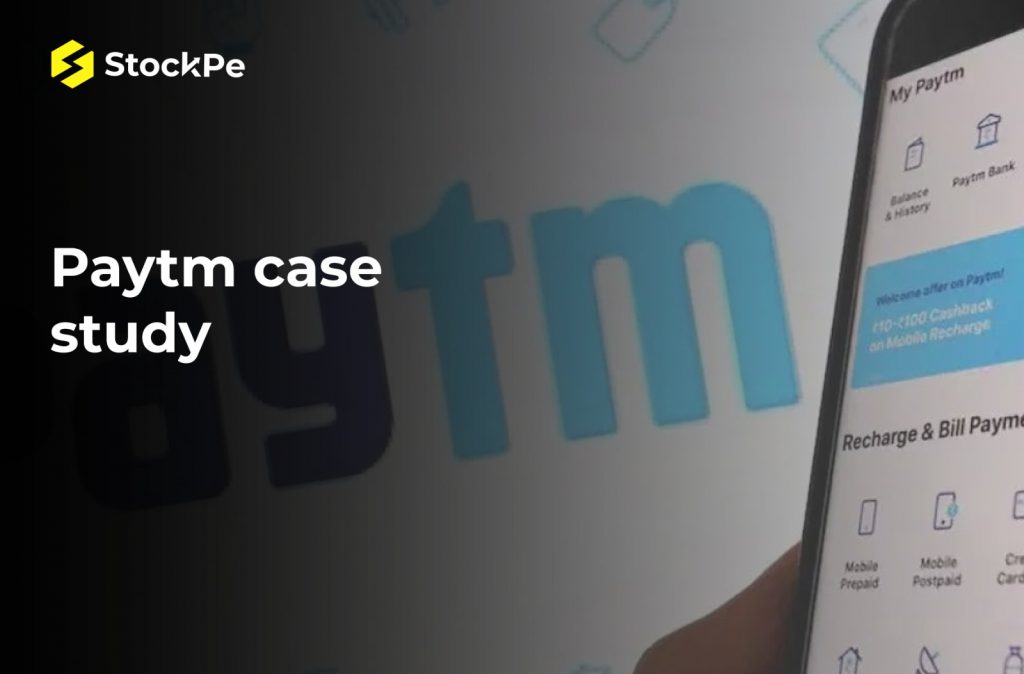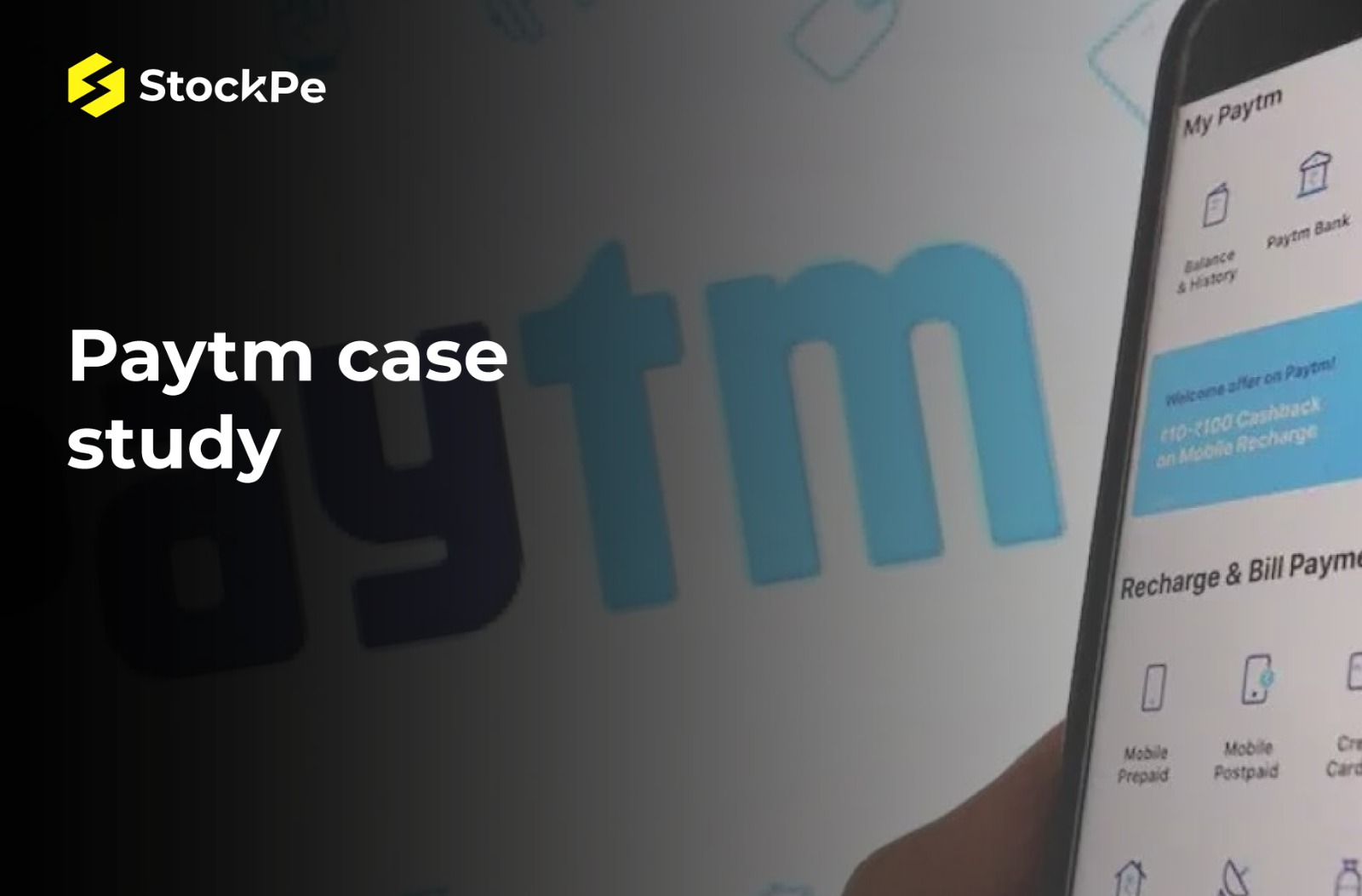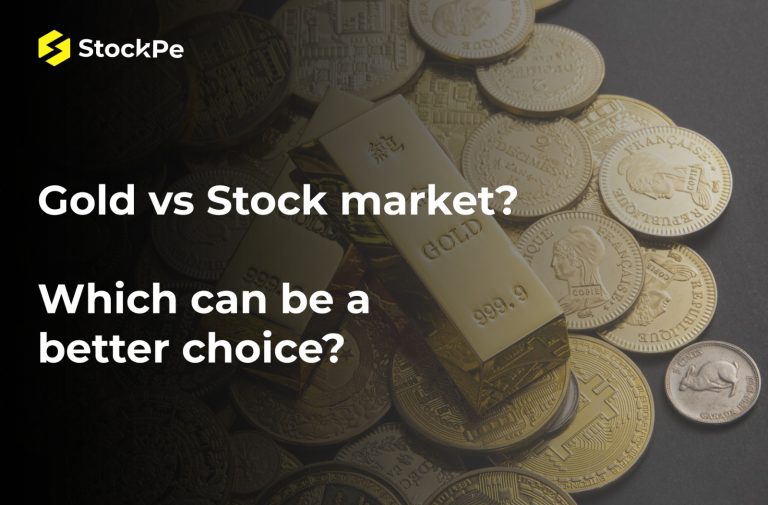Financial Technology popularly termed as Fintech sector has flourished exponentially after the demonetization in 2016. According to a report, India’s Fintech industry was valued at US $50 billion in 2021 and is expected to reach the value of US $150 billion by 2025. And if we talk about the leading players in the industry, Paytm comes to the top of the list unarguably.
Paytm is India’s leading financial services platform offering digital payments ranging from mobile recharge to bill payments (credit cards, DTH, electricity and utility bills). Along with traditional mobile banking, Paytm also acts as a gateway for ticket booking (IRCTC, IPL, etc.) and offers e-commerce services as well. Along with India, Paytm is operable in Japan and Canada and is also available in 11 Indian languages, serving more than 350 million registered users.
In this Paytm case study, we have covered the growth story of Paytm from being just one of the online platforms for recharge payments to becoming a lead disruptor of India’s fintech sector.

Paytm – Origin & Journey
Although Paytm was founded by Vijay Shekhar Sharma in 2010 in the NCR region of New Delhi, Noida, in actual terms, it started way before. Vijay Shekhar Sharma launched One97 Communications, the parent company of Paytm back in 2000. Paytm started as a normal mobile recharge website and over time it also introduced DTH recharges and landline bill payments.
A quick timeline of Paytm’s journey is given:
2010: Paytm was launched as a mobile recharge platform
2013: Paytm added DTH Recharge, Data Card, and Landline bill payments
2014: Paytm launched Gateway Payments for IRCTC and Uber
2015: Paytm became India’s first Fintech unicorn after funding from Alibaba Group and Ratan Tata
2016: Paytm introduced the Payments Bank
2017: After demonetisation, Paytm rolled out UPI (Unified Payments Interface)-based payments
2018: Paytm First Games owned by Paytm and Alibaba-backed AG Tech Holdings was launched
2019: Paytm launched QR/POS/Gateway combined services
2021: One97 Communications enters Indian Stock Market by launching its IPO
2023: Paytm Payments Bank launches UPI Lite
Major Paytm Services
As we move further with the Paytm case study, let us look at some of the popular products & service offerings by Paytm –
Paytm Insider
Paytm Insider is an online ticket booking platform co-owned by Paytm and Insider.in. It is the one-stop ticketing solution for popular events, concerts, cricket matches, and product fests happening in the city.
Paytm Mall
Paytm Mall is an e-commerce store launched by Paytm in 2017. It is a B2C platform intended to provide a Bazaar-like feel to the customers by choosing from over 1.4 lakh listed items. Paytm Mall takes inspiration from China’s biggest B2C company, Tmall. It raised over $200 million from Alibaba and SAIF partners in a highly anticipated funding round in March 2018.
Paytm Payments Bank
Paytm Payments Bank, after payments bank by Airtel and India Post, is the third payments bank in India. Payments Bank by Paytm received approval from the Reserve Bank of India in 2015 but was officially launched in November 2017. It provides complete banking services ranging from Savings Accounts to Loaning facilities. It also offers Paytm Wallet, which can be used as a mobile payment method while paying at any QR, online merchant or any digital transaction.
Paytm Money
Paytm Money is a SEBI-registered stock brokerage and advisory platform offered by Paytm. It was launched in 2017 and provides free demat account opening, trading and investment in Mutual Funds, the Stock market and also NPS retirement funds.
Revenue Model of Paytm
This Paytm case study highlights the major revenue sources of Paytm, which are as follows:
Interests from Escrow Account: Paytm secures the wallet money of its users in an escrow account linked with a nationalised bank. With this, Paytm makes around 4-6% of interest easily.
Commission from Merchants: Paytm charges nominal commissions from users as well as the merchants while making payments, purchasing digital gold or investing in stocks.
Advertisements: We often see pop-ups of offers and deals when we open the app, Paytm charges the companies and businesses for running those ads.
Marketplace: Paytm has a dedicated e-commerce store which brings a fine chunk of their revenue. Paytm Mall has a commission linked with the sellers.
Gateway Fees: Many platforms like IRCTC have a separate payment gateway linked with Paytm. In such cases, a gateway payment is applied.
Paytm Stats
REVENUE
*All values in Cr
| Year | 2019 | 2020 | 2021 | 2022 | 2023 |
| Revenue | 3232 | 3281 | 2802 | 4974 | 7990 |
| Revenue Growth in % | 0.1% | 1.51% | -14.6% | 77.51% | 60.63% |
Paytm has generated a revenue of around Rs. 7990 Cr in 2022-2023, which is a growth of over 3000Cr from its previous year’s earnings. After its listing on the NSE, it has given a CAGR of around 69% in its revenue.
PROFIT/LOSS
*All values in Cr
| Year | 2019 | 2020 | 2021 | 2022 | 2023 |
| Profit | -4182 | -2842 | -1696 | -2393 | -1776 |
| Profit Growth in % | -180% | 32% | 40.32% | -41.1% | 25.78% |
So, we can see that Paytm has been making significant losses over the years. High Operation costs and Customer acquisition costs are the main reasons for the above losses. Additionally, Paytm is often struggling with Government regulations as well which inhibits their income.
Major Acquisitions
Insider.in
Paytm acquired a majority stake in event booking and ticketing platform, Insider.in owned by OML Entertainment in June 2017. The deal was finalised for an amount of $5.42 million (44 crores).
NightStay
NightStay is a hotel-booking startup based out of Noida. Paytm acquired Nighstay in a $20 million (160 Crores) deal in 2019.
CreditMate
Paytm acquired complete stakes in CreditMate, a Mumbai-based digital lending startup in October 2021, a few days before its stock market inaugural. The amount of acquisition was however undeclared.
CONCLUSION
Paytm is one of the biggest fintech companies in India with a wide range of services on board. Since its inception in 2010, Paytm has been delivering high-end digital banking solutions. As a result, it is among the top 3 companies with maximum UPI transaction volumes in India. Additionally, Paytm is working on improving the infrastructure of digital payments in the country and making it even more robust.So, we hope you find this Paytm case study helpful and informative.





